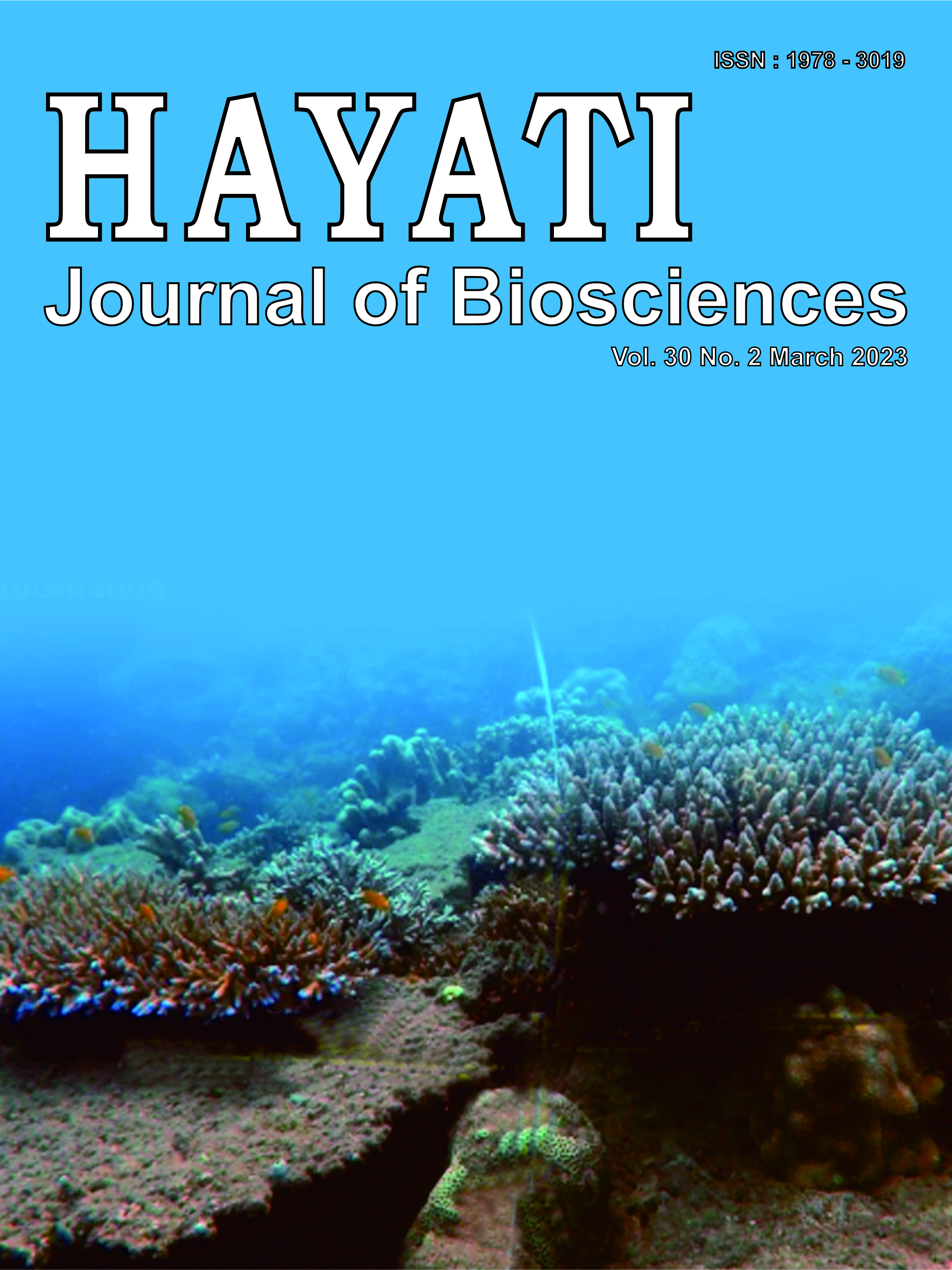The Changes in Seed Germination Capacity, Seedling Growth, and Leaf Morphology of Ficus variegata Blume Influenced by Gamma-Ray Irradiation
Abstract
Gamma irradiation treatments have commonly been applied to induce variation in plant genetic improvement programs. The improvement of nyawai (Ficus variegata Blume) is urgently needed mainly to break the seed dormancy, increase seedling growth, and induce variation for selecting desired traits. This research aimed to assess the effect of gamma irradiation doses on seed germination, seedling growth, and leaf morphology of Ficus variegate Blume. This experiment's irradiation doses ranged from 5-240 Gy and were applied to seeds with varying levels of vigor based on the artificial seed aging process. The data displayed a positive relationship between low doses of gamma irradiation and the nyawai seed's endurance. Low irradiation doses, 5 to 30 Gy, are deemed capable of promoting seedling development, leaf retention, and diversity in leaf structure. The higher irradiation doses than 30 Gy decreased seedling growth, leaf number, and seedling survival. In addition, these doses also affect some morphological changes, including seedling height and leaf length and width.
Downloads
Copyright (c) 2023 Muhammad Zanzibar, Agus Astho Pramono, Yulianti, Kurniawati Purwaka Putri, Dede J. Sudrajat, Naning Yuniarti, Nina Mindawati, Dida Syamsuwida, Danu, Ratna Uli Damayati Sianturi, Y. M.M. Anita Nugraheni, Nurhasybi, Junaedi Ahmad

This work is licensed under a Creative Commons Attribution-NonCommercial 4.0 International License.
HAYATI J Biosci is an open access journal and the article's license is CC-BY-NC. This license lets others distribute, remix, tweak, and build upon author's work, as long as they credit the original creation. Authors retain copyright and grant the journal/publisher non exclusive publishing rights with the work simultaneously licensed under a https://creativecommons.org/

























.png) IPB University
IPB University Department of Biology
Department of Biology The Indonesian Biological Society
The Indonesian Biological Society 

